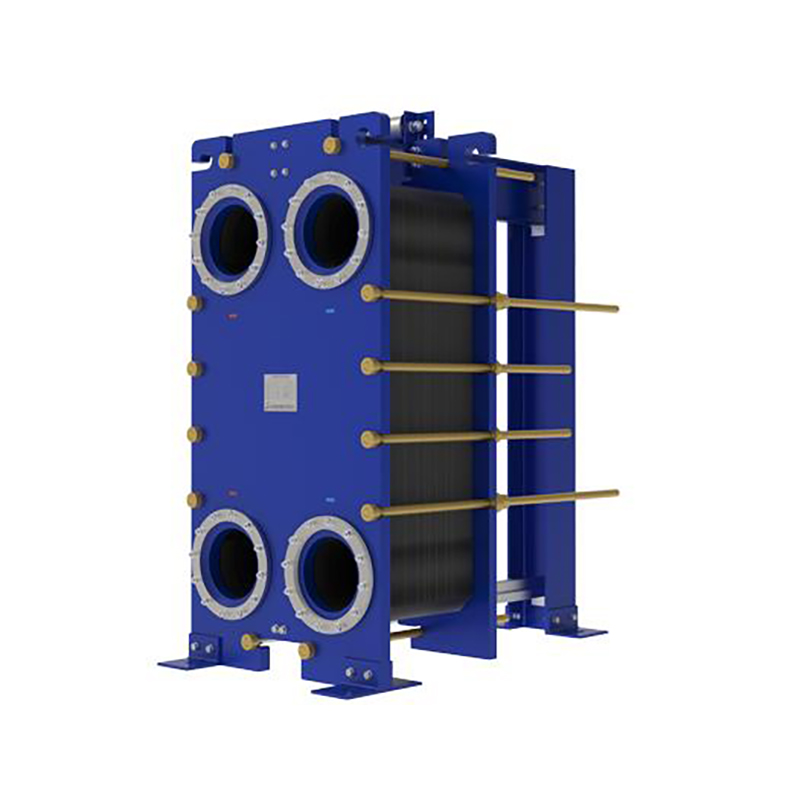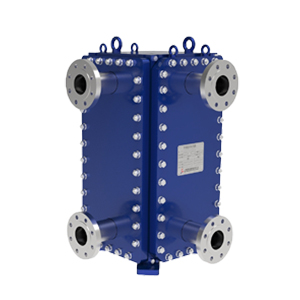5 key roles of plate heat exchanger gaskets.
Plate heat exchanger gaskets perform 5 key roles: ...
More
A Heat Air Exchange System, also known as a Heat Recovery Ventilator (HRV) or Energy Recovery Ventilator (ERV), is a mechanical ventilation device that improves indoor air quality and energy efficiency. It works by transferring heat between two opposing air streams: stale, exhausted indoor air and fresh, incoming outdoor air. During colder months, the system captures thermal energy from the warm air being expelled from the building and uses it to pre-heat the cold incoming air. Conversely, in warmer seasons, it can remove heat from the incoming outdoor air and transfer it to the cooler exhaust air, thereby pre-cooling the air supplied indoors. This core process of energy recovery ensures a constant supply of fresh, filtered air while significantly reducing the energy demands of heating and cooling systems. These systems are integral components in modern, tightly-sealed homes and buildings where natural infiltration is minimal, addressing the critical need for ventilation without the substantial energy penalty associated with traditional methods like opening windows or using exhaust-only fans. By maintaining balanced air pressure and continuously replacing contaminated indoor air with fresh, conditioned outdoor air, heat air exchange systems are fundamental to creating healthier, more comfortable, and sustainable living and working environments.
The operational principle of a heat air exchange system centers on a heat exchanger core, typically constructed from materials like aluminum or plastic with high thermal conductivity. The two air streams flow through alternating channels in this core, allowing heat to transfer through the walls without the streams mixing, thus preserving indoor air quality by preventing cross-contamination of odors, humidity, and pollutants. Modern systems are equipped with sophisticated filters that trap particulate matter (PM2.5, pollen, dust) and other allergens from the incoming air, significantly enhancing the indoor environment for occupants, particularly those with allergies or respiratory issues. According to data from the U.S. Department of Energy and various building science resources, these systems can recover between 70% and 85% of the energy from the exhaust air, leading to dramatic reductions in heating and cooling costs. For a typical household, this can translate to hundreds of dollars saved annually on energy bills, with the exact figure depending on local climate, energy prices, and home size. Their importance is underscored by building standards like Passive House (Passivhaus), which mandates ultra-low energy consumption and superior airtightness, making mechanical ventilation with heat recovery not just beneficial but essential. Furthermore, by managing humidity levels—ERVs can transfer moisture in addition to heat—these systems also protect the building envelope from damage caused by condensation and mold growth, which is a prevalent issue in poorly ventilated structures.
Select the most popular foreign trade service products to meet your diverse needs
Learn more about the dynamics and professional knowledge of the foreign trade industry

Plate heat exchanger gaskets perform 5 key roles: ...
More
A gasket in heat exchanger seals surfaces, blocks ...
MoreAPI 662 defines standards for plate heat exchanger...
More.jpg)
Plate air preheaters transform industrial processe...
More
Selecting the right preheater air system shapes th...
More
Ignoring a fouled heat exchanger causes high energ...
MoreSelect the most popular foreign trade service products to meet your diverse needs
Explore more content related to foreign trade services

User Comments
Service Experience Sharing from Real Customers
Michael Rodriguez
Facilities ManagerThis heat air exchange system has been a game-changer for our office building. The air quality improved dramatically from day one, and the energy efficiency has significantly reduced our heating costs last winter. The installation was straightforward, and the system runs incredibly quietly.
Sarah Chen
HomeownerWe installed this system in our new passive house, and it's absolutely brilliant. It maintains a perfectly comfortable temperature year-round with minimal energy use. The best part is no more stuffy air – it's always fresh. Highly recommend for any energy-conscious homeowner.
David Kim
Restaurant OwnerAs a restaurant owner, managing kitchen heat and grease while keeping dining areas comfortable is a constant battle. This system expertly handles the heat exchange, removing stale air and bringing in fresh, tempered air. It's robust, effective, and has made our environment much more pleasant for guests and staff. One star off for the complex initial setup, but well worth it.
Emily Watson
School AdministratorWe retrofitted our entire school with these units, and the impact on student concentration and health has been noticeable. The constant supply of fresh, filtered air has reduced allergy symptoms and seems to have cut down on the spread of common colds. The teachers are also very happy with the consistent, draft-free temperature in the classrooms.